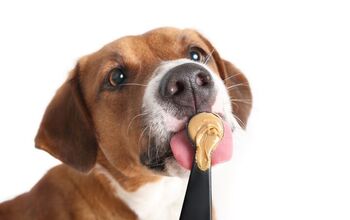What Is Endurance Training for Dogs?

Dogs are strong, energetic, and muscular animals. As such, they will have a naturally high drive for exercise and will depend on it in many ways. Neglecting your pet’s need for outdoor and indoor activities can lead to a lot of health-related problems, but also to a lot of behavioral issues as well. That is why it is important to plan out these activities according to your dog’s breed and energy levels. And of all the activities, endurance training comes out as one of the most popular. But what exactly is endurance training? Here’s what you need to know.
What is Endurance Training?
Endurance training for dogs is a type of exercise program designed to improve a dog's cardiovascular fitness, stamina, and – as the name suggests – endurance. It involves activities that challenge a dog's cardiovascular system and build up their muscular endurance over time. As such, endurance training is particularly beneficial for working dogs, sporting dogs, and dogs participating in canine sports such as agility, flyball, mushing, or competitive obedience.
The primary goal of endurance training is to increase a dog's ability to sustain physical activity for extended periods without becoming fatigued. This type of training helps dogs develop the necessary stamina to perform tasks or engage in activities that require prolonged physical exertion. Usually, endurance training programs typically involve a combination of aerobic exercise, interval training, and distance work. Aerobic exercises like jogging, swimming, or long walks at a brisk pace are commonly incorporated to elevate the dog's heart rate and improve cardiovascular fitness. Interval training involves alternating periods of high-intensity exercise with lower-intensity recovery periods, challenging the dog's anaerobic capacity. Distance work focuses on gradually increasing the duration and intensity of physical activity to enhance the dog's endurance gradually.
Of course, it is essential to tailor the endurance training program to the specific needs, age, and breed of your dog. Dogs should undergo a gradual progression in their training to prevent overexertion or injury, so don’t rush into it. Prioritizing safety and monitoring the dog's overall health and well-being during training is crucial. Furthermore, consulting with a professional dog trainer or a veterinarian experienced in sports medicine can provide valuable guidance on developing a suitable endurance training program for your dog.
Important Endurance Training Tips
If you want your pet to become the next pooch Olympics champion, then endurance training is certainly the way to go. But still, even though you know the basics, it will go a long way to learn some nifty tips and tricks as well. Not only will they give you an edge in training, but will also make sure your dog stays safe and healthy. Here are a few key tips:
- Start with a veterinary check-up: Before beginning any endurance training program, it's important to ensure that your dog is in good overall health. Schedule a visit to the veterinarian to get your dog checked and make sure they are fit for endurance training.
- Gradual progression: Begin with a fitness baseline and gradually increase the intensity and duration of your dog's exercise over time. Avoid pushing your dog too hard too soon, as it can lead to injuries or fatigue. Start with shorter distances or less intense exercises and gradually build up from there.
- Mix up the exercises: Incorporate a variety of exercises into your dog's training routine. This helps prevent boredom and provides a well-rounded fitness regimen. Include activities such as running, swimming, hiking, or cycling to keep your dog engaged and challenged.
- Focus on proper nutrition and hydration: Endurance training requires additional energy, so ensure your dog's diet provides adequate nutrition to support their activity level. High protein foods such as this one are ideal.
This particular food is all natural and made with real meat that’s been air-dried to preserve nutrients and flavor, so it’s a favorite with dogs – and owners mindful of their pet’s diet. Of course, you should consult with your veterinarian to determine the right type and amount of food for your dog's specific needs. Also, make sure your dog stays well-hydrated. Carry water and a collapsible bowl during your training sessions. Here’s a good example of a quality travel water bowl you can take with you on the go – it’s sturdy, compact, and lightweight.
- Rest and recovery: Adequate rest is essential for your dog's muscles to recover and adapt to the training. Incorporate rest days into your training schedule to prevent overexertion and reduce the risk of injury.
Remember, it's important to consult with a professional dog trainer or veterinarian experienced in sports medicine to tailor an endurance training program specifically for your dog's needs and abilities. They can provide personalized guidance based on your dog's breed, age, and overall health.

A proud mama to seven dogs and ten cats, Angela spends her days writing for her fellow pet parents and pampering her furballs, all of whom are rescues. When she's not gushing over her adorable cats or playing with her dogs, she can be found curled up with a good fantasy book.
More by Angela Vuckovic

























